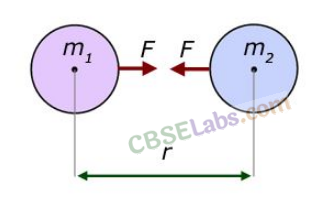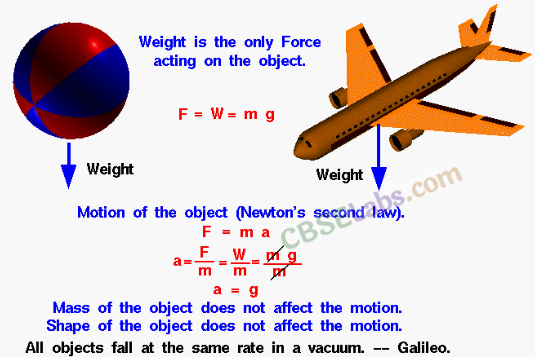Gravitation Class 9 Notes – Here We have provided summary and revision notes for Class 9 Science Chapter 10. This CBSE notes contains CBSE Key Notes, CBSE Revision Notes, Short Key Notes, images, diagrams of the complete Chapter 10 titled Gravitation of Science taught in class 9. If you are a student of class 9 who is using NCERT Textbook to study Science, then you must come across Chapter 10 Gravitation. After you have studied lesson, you must be looking for notes to memorize. Here you can get complete Chapter 10 Gravitation class 9 notes in one place. For a better understanding of this chapter, you should also see NCERT Solutions for Class 9 Science Chapter 10 Gravitation.
CBSE Class 9 Science Notes Chapter 10 Gravitation Pdf free download is part of Class 9 Science Notes for Quick Revision. Here we have given NCERT Class 9 Science Notes Chapter 10 Gravitation. Gravitation Class 9 notes will help you to quickly revise main points from NCERT Textbook of class 9 Science.
CBSE Class 9 Science Notes Chapter 10 Gravitation
Facts that Matter
The universal law of gravitation: Every object in the universe attracts every other object with a force which is proportional to the product of their masses and inversely proportional to the square of the distance between them.
The force is along the line joining the centres of two objects.

Let two objects A and B of masses M and m lie at a distance of d from each other as shown in the figure.
Let F be the force of attraction between the law of gravitation

G is called a universal constant because its value does not depend on the nature of intervening medium or temperature or any other physical variable.
S.I. unit of G = Nm2/kg2
Value of G = 6.673 x 10-11 Nm2/kg2 (Found by Henry Cavendish)
Importance of universal law of gravitation
Universal law of gravitation successfully explained several phenomena like :
- the force that binds us to the earth.
- the motion of moon around the earth.
- the motion of planets around the sun.
- the tides due to the moon and the sun.
Freefall
When an object falls down towards the earth under the gravitational force alone, we say the object is in free fall.
The velocity of a freely falling body changes and is said to be accelerated.
This acceleration is called acceleration due to gravity, denoted by ’g’. Unit is m/s2.

The motion of objects under the influence of gravity ‘g’ does not depend on the mass of the body. All objects small, big, heavy, light, hollow or solid fall at the same rate.
The three equation of motion viz.

If an object is just let fall from a height then in that as u = 0 and a = g = 9.8 m/s-2.
If an object is projected vertically upward with an initial velocity u, then a = – g = – 9.8 ms-2 and the object will go to a maximum height h where its final velocity becomes zero (i.e., v = 0).
Mass: Mass of an object is the measure of its inertia. It is the matter present in it. It remains the same everywhere in the universe.
Weight: The force of attraction of the earth on the object is known as the weight of the object. It’s S.I. unit is Newton.
W = m x g

NCERT Notes for Class 9 Science
- Chapter 1 Matter in Our Surroundings Class 9 Notes
- Chapter 2 Is Matter Around Us Pure Class 9 Notes
- Chapter 3 Atoms and Molecules Class 9 Notes
- Chapter 4 Structure of the Atom Class 9 Notes
- Chapter 5 The Fundamental Unit of Life Class 9 Notes
- Chapter 6 Tissues Class 9 Notes
- Chapter 7 Diversity in Living Organisms Class 9 Notes
- Chapter 8 Motion Class 9 Notes
- Chapter 9 Force and Laws of Motion Class 9 Notes
- Chapter 10 Gravitation Class 9 Notes
- Chapter 11 Work, Power And Energy Class 9 Notes
- Chapter 12 Sound Class 9 Notes
- Chapter 13 Why Do we Fall ill Class 9 Notes
- Chapter 14 Natural Resources Class 9 Notes
- Chapter 15 Improvement in Food Resources Class 9 Notes
We hope the given CBSE Class 9 Science Notes Chapter 10 Gravitation Pdf free download will help you. If you have any query regarding NCERT Class 9 Science Notes Chapter 10 Gravitation, drop a comment below and we will get back to you at the earliest.